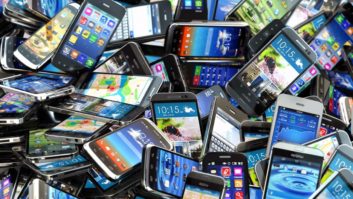Port Washington, N.Y. – Google’s Android smartphone operating
system has unseated RIM’s Blackberry as the dominant OS in smartphones used by
consumers in the United States, according to The NPD Group’s market research.
For the first time since Q4 2007, RIM fell to second position, as
Android took the lead with 33 percent of all smartphones purchased in Q2, ahead
of RIM at 28 percent and Apple at 22 percent. BlackBerry OS share fell 9
points.
The rankings are based on NPD’s tracking of U.S. consumers, aged
18 and older, who reported purchasing a mobile phone. NPD does not track
corporate/enterprise mobile phone purchases.
“For the second consecutive quarter, Android handsets have shown
strong but slowing sell-through market share gains among U.S. consumers,” said
Ross Rubin, industry analysis executive director for NPD. “While the
Google-developed OS took market share from RIM, Apple’s iOS saw a small gain
this quarter on the strength of the iPhone 4 launch.”
The top 5 Android smartphones sold in Q2 were as follows:
1. Motorola Droid
2. HTC Droid Incredible
3. HTC Evo 4G
4. HTC Hero
5. HTC Droid Eris
“BlackBerry 6 includes several features that have been popular in
recently launched Android phones, such as a capacitive touch screen, a web-kit
based browser and expanded app support. However, the BlackBerry Torch (
) lacks the large-screen allure that has characterized some of the
best-selling Android devices, such as the Droid Incredible and Evo 4G,” Rubin
said.
Model selection and promotions continue to play a role in the
race for carrier dominance. According to NPD’s Mobile Phone Track, Verizon
Wireless has maintained its lead among top carriers for the last three quarters,
comprising a third (33 percent) of the units sold in the U.S. mobile phone
market in Q2, followed by AT&T (25 percent), Sprint (12 percent) and
T-Mobile (11 percent).
In Q2, Verizon Wireless continued their buy-one-get-one offers on
all smartphones, including both RIM and Android models, NPD pointed out.
In spite of an overall decline in the number of mobile phones
purchased year over year, the ongoing popularity of both messaging phones and
smartphones, which are generally more costly than standard feature phones,
resulted in slightly higher prices for all mobile phones in Q2. The average
selling price for all mobile phones reached $90, which is a 3 percent increase
since Q2 last year. Smartphone unit prices, by comparison, averaged $143 in Q2
2010, which is a 9 percent decrease over the previous year.












